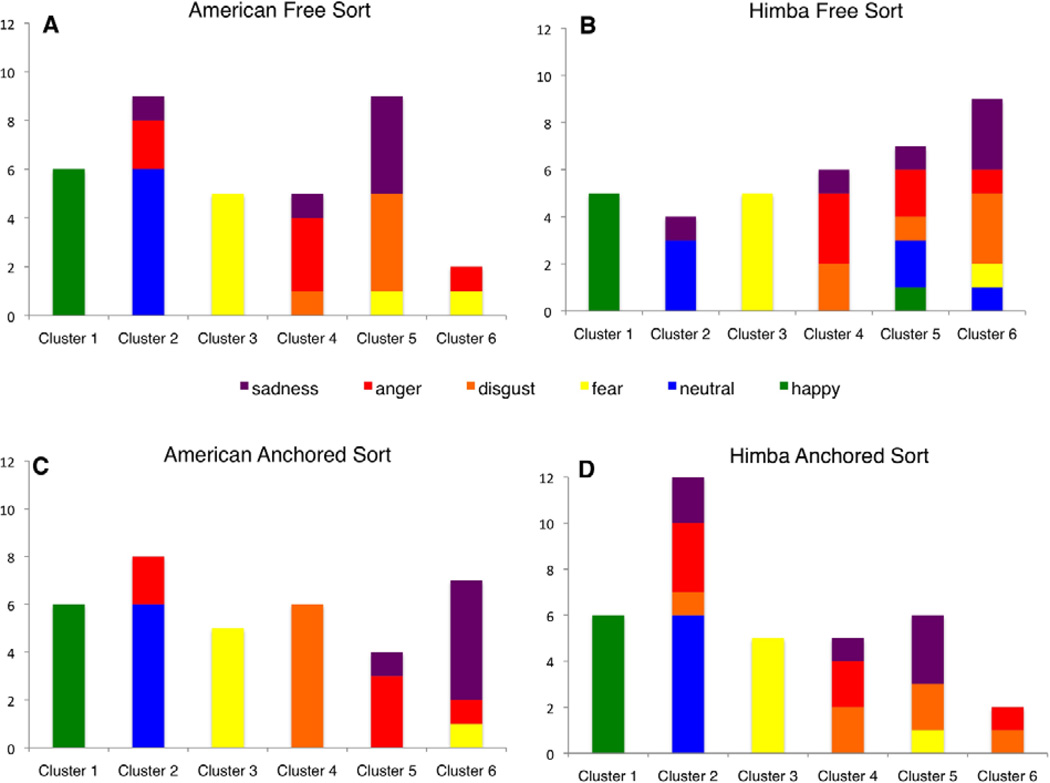Figure 2.
Six-cluster solutions derived from a hierarchical cluster analysis. The cluster analyses are plotted in A–D with cluster on the x-axis. The y-axis represents the number of items grouped into a given cluster, with contents stacked by the emotion portrayed in each posed facial expression. Stacked bars containing several different colors indicate that faces portraying different discrete emotions were clustered together. Bars with a single color (or predominance of a given color) indicate relatively clean clustering of faces depicting one emotion category. The US free sort (A) cluster solution contains discrete emotion (i.e., the presumed “universal”) clusters with the exception of cluster five, which appears to contain portrayals of both disgust and sadness. The Himba free sort (B) has three clear clusters (one through three) that map on to discrete emotion (i.e., the presumed “universal”) pattern. Both US (C) and Himba (D) conceptually anchored sorting appears to yield relatively distinct cluster solutions compared to free sorting.

